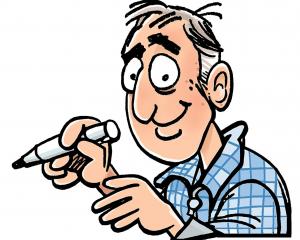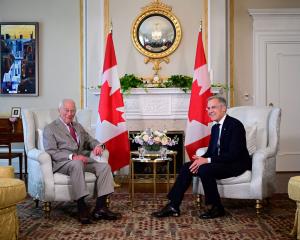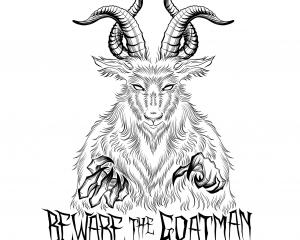The microcosm of the Trenz tourism conference in Rotorua this week gave David Loughrey a very nice, if somewhat skewed, view of the North Island centre.
After a week at one of media's most prized junkets, bloated with free food, soaked in free wine, and with a sense of entitlement finely honed in the sulphurous air, he reports back.
There was a moment at the Trenz after-party at Skyline Rotorua, where gondolas, luge, food, wine and mountain biking attract the tourist up the steep slopes of Mt Ngongotaha, when human civilisation reached its peak.
Standing with a plate heavy laden with glistening meat, one was forced to juggle an empty wine glass while attempting to eat, leading to a feeling of mild irritation.
There were many rooms laden with free food and wine at the party, four bands, and one whole room devoted to desserts - you had to be there to believe it - and the last thing one needed was to be slowed down by the food/wine juggling process.
It was at that point a sharp-eyed waitress spotted my difficulties, took the wine glass, refilled it with full-bodied pinot noir exhibiting a rich, fruit-forward character laced with herb, leather and game-like qualities, and even a smoky, tobacco nuance, and returned to where I was standing.
That was nice, but it was what she did next that uplifted the evening from the superb to the divine.
The black-clad young woman produced the most cleverly designed plastic attachment, which slid snugly on to the side of the plate, and gently held the neck of the glass, freeing a hand to concentrate fully on eating and drinking.
Trenz is highly valued in media circles.
One journalist quietly admitted he did not broadcast the joys of New Zealand's number one junket in his newsroom, instead cleverly keeping it to himself.
He had been coming for the last decade.
It was my first time, but any drooling upstart intent on usurping my claim on next year's event will be in for a battle red of tooth and claw.
The annual international tourism trade event attracts tourism operators from around New Zealand (from wildly passionate cycle hire businesses to wildly passionate jet-boat operators) who get 15-minute slots with international buyers interested in what they have to offer.
All up, about 1100 people crammed into the very good Rotorua Energy Events Centre to do business.
But it is the hospitality provided at the event, which is managed by the Tourism Industry Association, that really matters.
The media room was warm and well run; the free lunch, a sumptuous buffet affair, and the free bar at day's end were pleasant.
There was a snack bar, with everything from pineapple lumps to obscure Asian fizzy drinks, where you just asked the friendly shop assistant for the snack of your choice, then left without paying.
It's a brilliant concept.
The complimentary air travel that allows you to swoop into Trenz, also, of course, introduces the attendee to the city of Rotorua.
The view for the busy delegate, however, encompasses the allocated lakeside hotel, the five-minute walk past the Rotorua Museum and Polynesian Spa, the events centre, and the view from bus windows on the way to tourism assets like Skyline and the Rainbow Springs Kiwi Wildlife Park.
Those bits are most certainly very nice.
The museum is located in the former Rotorua Bath House, a 1906 development erected for the Department of Tourist and Health Resorts, by direction of the New Zealand Government under the supervision of the Public Works Department.
In a time when departments had names far better than those of today, the thermal springs were seen as an excellent cure for ailments from ''plethora and corpulancy, congestions of the viscera'', and, of course, sexual impotency.
To aid in the eradication of these unpleasant diseases, particularly those unfortunate enough to suffer from rheumatoid arthritis and nervous exhaustion, an extremely dangerous looking device added an electric shock to the waters.
Rainbow Springs featured some shy kiwi, a very knowledgeable Rotorua-born guide who studied zoology at the University of Otago, and masses of trout.
From the bus windows, local roading infrastructure appeared sound.
The Maori culture of the area can be seen everywhere, from waka housed near the waterfront to the work of the Maori Arts and Crafts Institute at Te Puia.
But the most terrific thing about Rotorua is, of course, its bubbling undercurrent of thermal activity.
Its lake constantly steams, and a track along its shore passes hissing, boiling vents of clearly dangerous earthly exertion.
That thermal activity has prompted some of the most entertaining and creative information boards in New Zealand, which give the visitor a strong sense of their own impermanence, in the face of the awesome power of this cruel Earth.
''In this area the Earth's crust is particularly thin,'' one reads.
''Please stay on the trail,'' says another.
''The rock looks strong, but in places is only centimetres thick.
''Large voids and scalding steam and water lie beneath the crust.
''This area is unstable and dangerous.''











